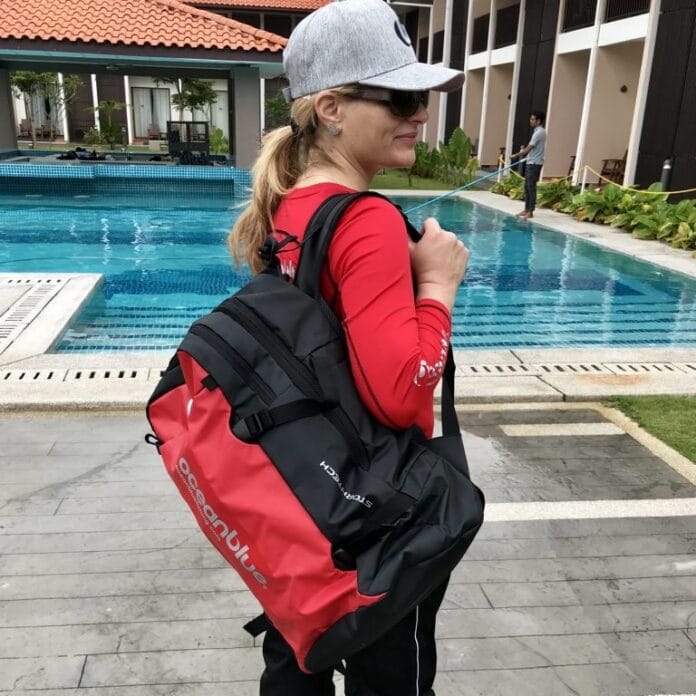Travelling to distant and remote fishing destinations will allow us to hook up to the fish of our dreams but all these travelling will take a toll on our luggage, gear, and equipment if we don’t have the right bags that can take on the abuse. Here are a few things to consider when choosing your bags for your next remote fishing adventure.You’ve found yourself in a remote island paradise surrounded by lush and vibrant vegetation. The crew arrives at the jetty on a tender to transport the guests and luggage towards the mothership with cold drinks for everyone to enjoy during the transport. The winds blow up some salt spray onto your face while light chop splash over the bow and onto everyone’s bags. Once on the mothership, everyone gets checked in to their rooms and soon after, start rigging up tackle while sipping cold beers getting ready for the fishing days ahead. You on the other hand zip open your conventional rolling suitcase only to find out that all your bag’s contents are soaking wet from transport. Apart from the wet contents you find your expensive reels and spools rolling loose, having fallen out of their boxes during transit when the expert luggage handlers at the airport had their hands on them. Damaged and bent spools bent shafts and broken reel foot to boot, you realize that the closest tackle shop is only one international flight away and you’re left with what you have. Fun times ahead.
Packing your fishing gear safely and correctly is an art form in itself and is one thing that deserves full attention to detail when performing. You can be a magician at packing but if your bags are not fit for the task at hand, you’ll find yourself scratching your head when things go awry and all your clothes and gear are drenched in rain and saltwater, with your Stella and Saltiga spools crushed like empty cans of Coke.
Packing your fishing gear safely and correctly is an art form in itself…
Here are the bags that you will need, some features that they must have, plus some extra tips on how to pack your equipment in them to avoid unwanted hassles.
1 Gear Bag / Main Bag
The gear bag will be your main equipment and clothing hauler, filled to its limits with your clothes, lures, lines, reel spools, leader, hooks, and other terminal tackle. Your spare camera batteries, chargers and everything else that needs to be checked in will be in here. The gear bag will be put through lots of abuse from baggage handlers, rain, saltwater, trees and branches, rocks, sand, dust, mud and all those good stuff while travelling to and from a remote fishing destination, thus the need for extreme durability and should also be waterproof. It should also have ample grab handles on all sides for easy loading and unloading onto trucks and boats. Wheels are great only in airports but will only add bulk to your already large bag so try to get bags without wheels. Getting bags without wheels will also push you to avoid overpacking to decrease weight, allowing you to focus only on the essentials. Here are some bags that you may want to consider:
Patagonia Black Hole Duffel
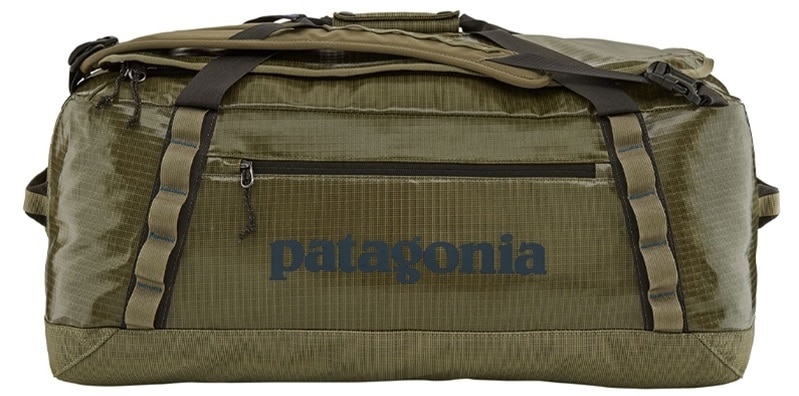 This is my personal favorite as it is possibly the cheapest bag available for the budget minded angler that does not skimp on adventure fishing features. Patagonia Duffel also cares for the environment and makes these bags out of 100% recycled materials from the body fabric, inner lining and webbing. It is not 100% waterproof though so try to be mindful of your bags placement when travelling. My favorite feature is the removable padded shoulder straps that allow me to carry it like a large backpack while in transit. It also has reinforced grab handles that can easily withstand over-zealous luggage handlers. The main compartment opens wide for easy packing with plenty of internal zippered pockets to keep your valuable paperwork and charging cables organized. This bag has an amazingly small footprint as it folds into its own pocket to store in the lodge or mothership cabins!
This is my personal favorite as it is possibly the cheapest bag available for the budget minded angler that does not skimp on adventure fishing features. Patagonia Duffel also cares for the environment and makes these bags out of 100% recycled materials from the body fabric, inner lining and webbing. It is not 100% waterproof though so try to be mindful of your bags placement when travelling. My favorite feature is the removable padded shoulder straps that allow me to carry it like a large backpack while in transit. It also has reinforced grab handles that can easily withstand over-zealous luggage handlers. The main compartment opens wide for easy packing with plenty of internal zippered pockets to keep your valuable paperwork and charging cables organized. This bag has an amazingly small footprint as it folds into its own pocket to store in the lodge or mothership cabins!
Simms Dry Creek Duffel
Getting onto the pricier offerings in the market, we have the Simms Dry Creek Duffel next. This baby is fully waterproof. It is also highly durable as it is made from 600 denier ripstop material with double sided TPU lamination, meaning that it has a tough plasticky coating that will last years of use and abuse. This bag does not utilize a full zipper enclosure but uses a roll top mechanism with locking clasps for secure closure. No worries about big waves splashing over your Dry Creek duffel or heavy rains. Rest assured all your gear will be safe and dry. No shoulder straps and additional grab handles though so a bit of maneuvering when lifting and loading is required.Yeti Panga Duffel
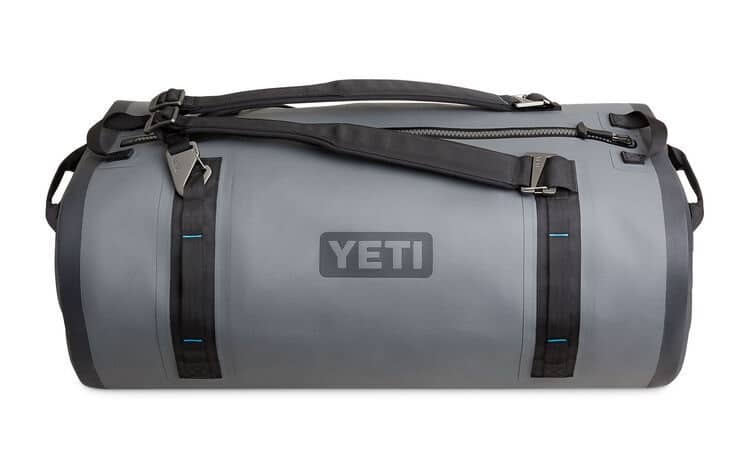 The Yeti Panga Duffel is extremely durable and is fully submersible! It also has double sided TPU lamination thus making it resistant to nature’s assault. I love the amount of lash points and handles, six in total, making it easy to grab onto when loading and offloading. Yeti also has this Hydrolok zipper system that they say keeps water out fully. Keeping the zipper clean is key though to avoid corrosion and to avoid the zipper getting stuck. The inside have two additional mesh storage pockets but doesn’t have zips so the stuff you put in them just falls out when your bag rolls over while in transit.
The Yeti Panga Duffel is extremely durable and is fully submersible! It also has double sided TPU lamination thus making it resistant to nature’s assault. I love the amount of lash points and handles, six in total, making it easy to grab onto when loading and offloading. Yeti also has this Hydrolok zipper system that they say keeps water out fully. Keeping the zipper clean is key though to avoid corrosion and to avoid the zipper getting stuck. The inside have two additional mesh storage pockets but doesn’t have zips so the stuff you put in them just falls out when your bag rolls over while in transit.
Fishpond Thunderhead Submersible Duffel
This is one of the all-time travelling angler favorites. The Fishpond Thunderhead Submersible has great unbiased reviews from anglers all over the world. This bag is not on the affordable side of the luggage spectrum though, but you can rest assured that all your gear inside will stay safe and dry. Materials used are 100% recycled too so it keeps Mother Nature happy. TPU fabric coating on outside and inside of the bag makes it waterproof similar to the other bags mentioned earlier. The main cargo zipper is called TIZIP which Fishpond claims to be fully waterproof. I’d still take extra time to clean the zippers often when travelling to avoid it getting stuck. I love the climbing rope handles and shoulder straps, and both sides have well made grab handles for easy loading and offloading.2 The Boat Bag / Carry On Bag
Your boat bag will serve as your carry on for these sorts of trips and by the name itself, will accompany you even while fishing on the boats. While travelling, it will contain gadgets or your spare clothes and personal essentials. But when fishing, it will have your camera, batteries and lenses, terminal tackle, tools, lures, spare sunnies and other fishing essentials that need to be with you at all times. It can be a backpack style bag or a smaller duffel and the choice is all up to you and how you like to carry your gear around when travelling. Fly anglers will want a backpack so they can take the bags with them while wading the flats or hiking through the mountains. Here are some of the favorites:
Soft Shelled Tackle Bags
You’ve probably seen these bags. They are not as solid as the hard body tackle boxes of yore but are easily hauled and can take a major beating on a boat. These guys are not ideal for the flats or walking angler but are touted as the best for boat anglers. They are resilient to bumps and can take abuse while not damaging the gel coats on the fishing boats. Most major fishing manufacturers will have a boat bag of their own and it is down to personal taste as to what you will get for yourself so I won’t really go into the different bags’ features. Some will be fairly waterproof while others will only be “water-resistant”. All these bags will have sufficient storage, and some will have more accessory pockets than others but all you need to remember is that they are for your daily fishing needs.Waterproof Backpacks
Backpacks are also great when travelling through airports, jumping on trucks and buses, walking and exploring, plus they can take a lot of stuff.
Simms Dry Creek Z Backpack
The Dry Creek Z backpack will keep all your gear safe and dry no matter what the weather conditions are. I love the self-healing TruZip waterproof zipper that Simms claim to be 100% submersible. Early owners say that the zip feels similar to closing a Ziploc baggie. The 35 liter capacity is more than enough for my daily fishing essentials and will most likely be with me the whole week.
Patagonia Stormfront Backpack
One of the flats guides’ favorites is this Patagonia Backpack. Extremely rugged due to its TPU coating both inside and out ensures resistance to sharpies in the jungle or out at sea. It has the same TIZIP zipper enclosure system as its bigger duffel siblings which is also fully waterproof. It is large enough to engulf a 15” laptop, camera, and other gear for when travelling in planes and boats. It will then double as a day boat bag for your daily fishing activities. Fly anglers love the added web loops for their rod tube.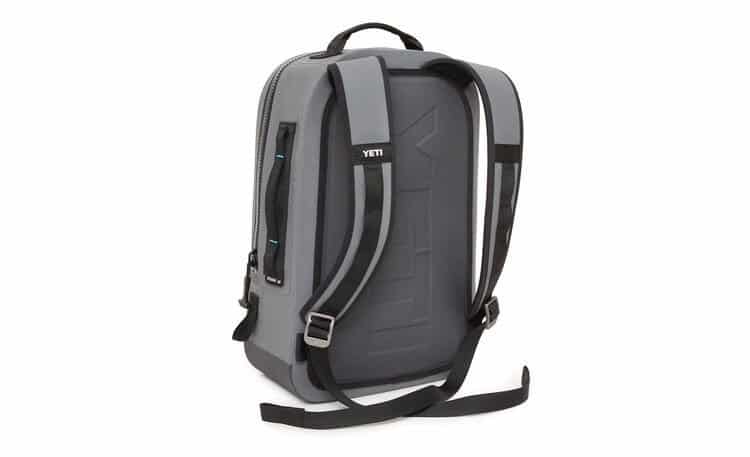
Yeti Panga Backpack
Basically a shrunk version of the Panga Duffel, this backpack is as waterproof, sturdy and capable as its bigger sibling. Puncture resistant and waterproof, large enough for your daily fishing essentials. Nothing more to be said.
3 The Rod Tube
A must have for international travel, a sturdy and well-made rod tube will house your precious rods during travel to the fishing destination. It must be big enough to swallow the quiver of rods you intend to bring and should be near bulletproof in order for it to handle the physical abuse of travel from home to desired destination. I can only recommend one rod tube at this stage as it has been the only rod tube I’ve used for international travel and it is the Series 1 SporTube.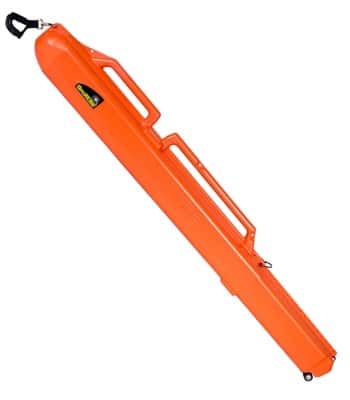 Originally designed as a transport case for skis, anglers soon found out that these durable hard cases work well for transporting their beloved fishing rods. Both interior ends are padded for added protection albeit you must pack your rods well to avoid any accidents. The wheels are a great bonus and helps heaps when travelling through busy airports. The hard shell plastic is really durable and I’ve yet to encounter any problems with their durability. The clip lock system allows the tube to be extended to accommodate longer rods and shortened for storage when not in use.
Originally designed as a transport case for skis, anglers soon found out that these durable hard cases work well for transporting their beloved fishing rods. Both interior ends are padded for added protection albeit you must pack your rods well to avoid any accidents. The wheels are a great bonus and helps heaps when travelling through busy airports. The hard shell plastic is really durable and I’ve yet to encounter any problems with their durability. The clip lock system allows the tube to be extended to accommodate longer rods and shortened for storage when not in use.
Again, there are a lot of rod tubes available out there that can do the job and others that may do better. Check out Plano and Natureboys rod tubes too.
Bonus Tips:
◘ Make sure you weigh your bags before locking them and weigh them a few times. You always want to pack within your allowable luggage limit. May it be 30kg or 21kg. Make sure you stay within your limits to avoid paying extra for excess weight.
◘ Check with your charter operator and guides if you will be travelling on small planes that can only take an X amount of luggage weight. Some Cessna planes can only take a few hundred kilos of luggage including the passengers! So, make sure you know how much you can carry and try to bring only the essentials.
◘ When packing your rods in your rod tube, the rod sleeves that come with your purchase won’t be enough to keep them safe during travel. Wrap your rods tight with spare clothing like your fishing shirts and some cotton t-shirts you intend to use during the trip. Give your rod tube a few good strong shakes and if anything rattles or moves inside, take it apart and re-pack the rods more tightly until nothing moves inside the rod tube.
“There is a fine line between enough gear and too much gear, make sure you know your limits as well as your bags’ limits.”
◘ When packing your reels, keep them inside their reel pouches then wrap them with your fishing shirts too. Make sure that you place them in the middle of your bag where it is surrounded by clothing and other soft shock absorbing materials. Bringing your reels inside the boxes can help with protection but take into account that they do take up additional space.
◘ FRAGILE stickers: they are free. Ask your airline check in officer for extra fragile stickers and ask them nicely. Stick them on your rod tube and on your gear bag.
◘ You may have the opportunity to bring more equipment or may be limited only to a few kilos of luggage and it is essential that you maximize your allowable luggage but avoid overpacking. There is a fine line between enough gear and too much gear, make sure you know your limits as well as your bags’ limits.All you need to do now is book a Vanuatu fishing trip and catch that fish of a lifetime!

